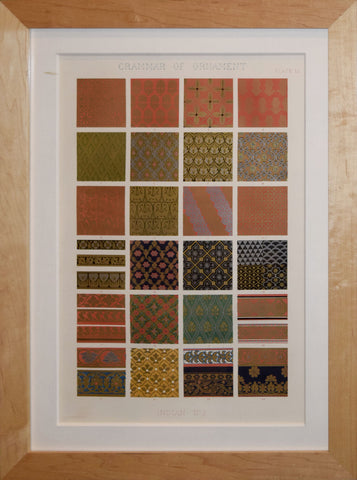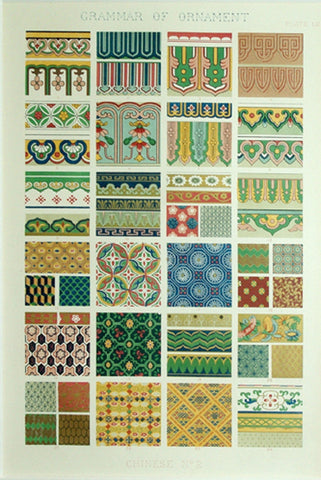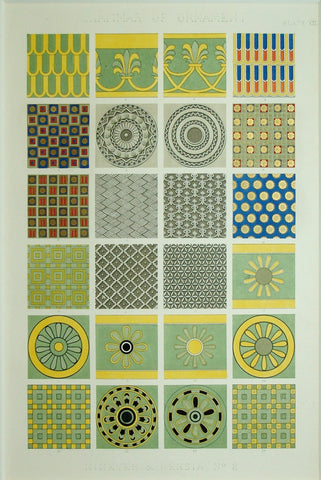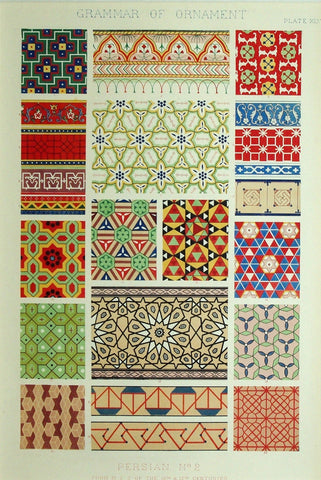Search By Artist
Owen Jones (1809-1874)
The Grammar of Ornament.
London: Day and Son, Lithographers to the Queen, 1856.
Chromolithographs.
These plates are from the first edition of what proved to be Jones's most enduring and influential work, "partly because it was adopted as a set text for the schools of design which had been established in the 1830s as part of a governmental move to raise the standard of design of manufactured goods. In the late 1840s and early 1850s they were subject to a large-scale reorganization which included the setting up of a Museum of Ornamental Manufactures, for both student and public use. Owen Jones was one of those appointed to select objects for the museum from the displays at the Great Exhibition. However, as a teaching aid the museum was seen to have two disadvantages: it would encourage students to copy the examples rather than to comprehend the principles of good design, and it was not accessible to students at the provincial schools.The Grammar of Ornament overcame both of these obstacles, and its precepts became the doctrine of the schools. It was reissued twice and continued in use in art schools well into the twentieth century.
"Jones was to become one of the most influential, prolific, and well-known designers of mid-nineteenth-century Britain. A man of his time, he made a major contribution to the development of design theory and education at a point when design was considered to reach beyond the aesthetic sphere and into the realms of economics and morals. And his spectacular architectural schemes and designs for consumer goods catered to the needs and desires of a growing and increasingly affluent and leisured middle class... The last-named set out, in a list of thirty-seven propositions, his principles of good design and colouring. These were illustrated and expanded in twenty chapters, each of which presented examples of fine ornament from a particular geographical area or historical period. The last chapter, ‘Leaves and flowers from nature’, emphasizes the importance of nature and natural growth in design" (Lesley Hoskins for DNB).








